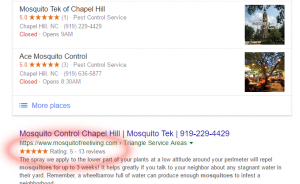On Page Optimization
On page optimization is the part of SEO that covers optimizing the individual pages of a website for elements such as textual and visual content, page layout and structure, keywords, metatags, and internal linking.
While many SEO company’s may tout that “content is king”, it’s much more important that you don’t just load your website up with as much random content as possible, but your site be well structured and deliver information that is easy to find, easy to understand, and simultaneously answers common questions that your visitors might ask. Gone are the days of overloading pages with repetitive keywords meant to increase “keyword densities”. Today’s on page SEO focuses on enriching your content with relevant answers that strategically balances multiple variations of the keywords that easily identify and link each page of your primary products or services.
Page Structure
While technical SEO deals with the importance of the site URL structure, on page optimization covers page layout and structure. Just like how the site structure needs to section off areas of information according to it’s category, a webpage should do the exact same thing. Look at the page you’re reading. The main topic is “On Page Optimization”, and the top of the page offers a concise definition followed by a brief overview of the page, and then sub-topics that encompass the main topic.
Content Development
Content is defined by everything from written pages that explain your products or services, to images, videos, infographics, and blog posts that can not only serve as an aide in helping your visitors get the information they need, but also be a resource for external websites that can link to yours as an authority on any given subject.
Meta Tag Optimization
 Meta tags are the code most commonly seen as the titles and descriptions of your webpages when a search engine provides results from a search. Although many SEO companies completely focus on those 2 elements for meta tag optimization, there are other ways to use them to your advantage, such as “rich snippets” that show off eye-catching Google review ratings with stars, image meta tags that provide relevant textual replacements for times when images aren’t able to be shown, and articles with recognizable authors just to name a few.
Meta tags are the code most commonly seen as the titles and descriptions of your webpages when a search engine provides results from a search. Although many SEO companies completely focus on those 2 elements for meta tag optimization, there are other ways to use them to your advantage, such as “rich snippets” that show off eye-catching Google review ratings with stars, image meta tags that provide relevant textual replacements for times when images aren’t able to be shown, and articles with recognizable authors just to name a few.
Internal Linking
Internal link optimization has several very important aspects to how it not only allows your visitors to easily navigate to relevant pages within the textual content of your site, but it can be also used to add variations of key phrases that identify certain pages on your site which indicate to Google different words that people can find you with through a web search. It’s important to not over-optimize those links or Google will see them as unnatural and devalue their importance.
